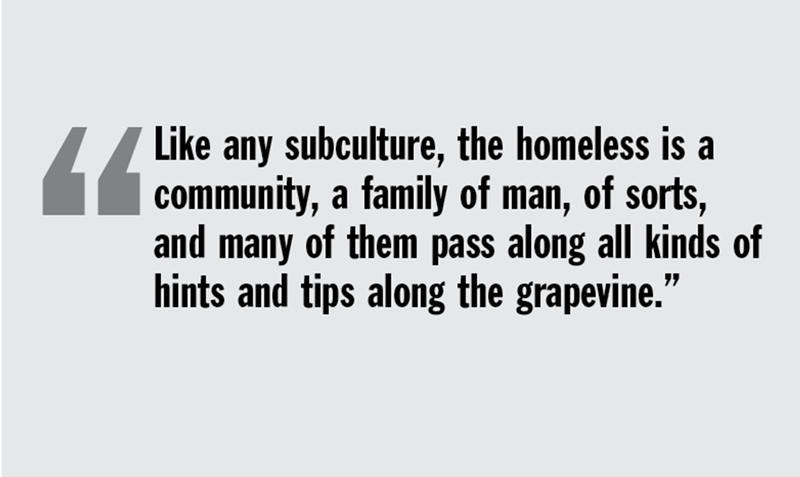There is a profoundly false sense of security not only on the campus of the University of Cincinnati but also surrounding it, and this isn’t anything new.
Way back in the Stone Ages of the early 1980s when I was a floundering freshman English major and about to spend all my student loan money on cassette tapes at Mole’s Record Exchange on Short Vine, I thought there were walls and moats visible only to those entering or exiting any parts of the then-less-than-bucolic-brick-and-mortar campus.
I was a commuting student so I had favorite side street (Burnett Woods) and main drag (Jefferson Avenue) go-to parking spots.
I never had to look over my shoulder or be “aware.”
There was the time I was skipping afternoon classes one brilliant spring day. Approaching my car in Burnett Woods, I spied two men about to unzip and bump uglies against the trunk of my 1970s-era canary yellow AMC Hornet. It wasn’t until I got right up on them (I loudly cleared my throat) that they zipped up and blithely walked away.
None of my colleagues in any of my classes ever traded horror stories about crime, being crime victims or receiving crime alerts from public information officers at UC.
Unlike now.
I’ve noticed a creeping ghettoization of Clifton surrounding UC’s campus either despite or because of the development as I schlep back and forth to campus to drop off and pick up my partner from work or when I’ve ridden the bus there from Walnut Hills to teach classes throughout the past six years.
Environs surrounding UC are filthy and thick with passive indigent folks posted outside Chipotle and very aggressive ones between Panera and BW-3. Young black kids orbit the bus stops from Calhoun Street at the rear of the Law School around to what must be one of the grimiest bus stops in the city on McMillan Avenue by the Thai Express carry out.
An actual neighborhood intermingles with all this urban swell many students think is cool because all the beer, fast food, coffee, drugs and energy drinks are within walking distance. This neighborhood exists when students leave for the summer and it’s inconvenienced when school is in.
This part of Clifton ain’t pretty.
And I know because I have seen it grow increasingly overcrowded, slum-like and grungy in the nearly 30 years since I was a student. And I listen to my students trade stories of their apartments and cars being burglarized; women students swap self-protection tips after some of them have been followed to their cars or even mugged; some of them have even been barred by police from getting to their own front doors because a violent crime has occurred nearby or next door and their street’s cordoned off.
I teach journalism at UC and the biggest part of that responsibility includes telling students the truth.
About every stinkin’ thing.
I always tell them they’re not living in a gated community, that UC is in the urban core of the city and that anyone from anywhere can walk onto and across that campus at any given time of the day or night.
I chastise them for living in an iUniverse where everyone is earplugged in and tuned totally out, walking and jogging and driving through life to their own, no doubt freely downloaded playlists. (Frighteningly, a growing number of students traverse campus and nearby streets wearing Beats by Dr. Dre noise reduction headphones.)
I encourage them to complain loudly about their safety because, after all, they are paying for their educations. And part of their tuition, I am certain, goes toward security.
I also tell them to write about it in the student newspaper.
They think this is a good idea, but they’re students.
There is a wide disconnect between thought and execution.
However, what they snort and roll their eyes most about are UC’s police officers and the deluge of email and cell phone crime alerts from Greg Hand, UC’s vice president of public relations.
It’s laughable that UC cops are now on Segways, electronically leaning forward across campus when their cruisers are either parked empty or they’re sitting in them idling on cold days.
And Hand appears Oz-like, somewhere dutifully firing off fear factor alerts and missives.
Meanwhile, many students don’t report crimes.
Like any victim, they assume it does no good.
UC’s police officers have never seemed able to get the business of security just right.
In February 1997, Lorenzo Collins escaped from the mental ward of University Hospital and ran around Clifton chased by UC officers and Cincinnati Police, who shot him dead in a Clifton backyard as he wielded a brick above his head.
If that weren’t egregious enough, it was discovered there’s no radio communication between UC police and city officers.
In August 2011 UC Officer Richard Haas tased 18-year-old Everett Howard after responding to reports of an on-campus fight. Haas claimed Howard approached him “with clenched fists” after Haas told Howard to stop.
Haas fired his Taser and Howard was cuffed on the ground.
Howard died of cardiac arrest.
UC’s initial paper reports were redacted when they were finally released to the media.
There’s been a recent spate of reports of strong-arm robberies by what victims describe as young black guys on foot and on bicycles; there are always the requisite push-in robberies in dorms; there have been shootings, car thefts and jackings and sexual assaults.
In a perfect world students wouldn’t be vulnerable by being drunk, by walking or jogging alone or by wearing headphones everywhere.
UC’s cops would be visible, communicative and capable but not deadly.
And Greg Hand?
Hand wouldn’t always be the bearer of bad news and he could stick to coming up with different ways to say “no comment” when presidents abruptly leave.
And he could keep adding parts to his epic “History of UC” video series.
But that history better include crime.
CONTACT KATHY Y. WILSON : [email protected]


